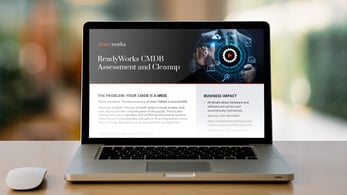The ‘Data and Analytics Leadership Annual Executive Survey 2023’ report talks about growth in the importance of software and argues that data and the ability to make sense of it is the driver for this growth. While 91.9% of respondents noted they are now delivering some level of business value from data investments, many struggle to make substantive progress toward achieving their outcomes. The report suggests that business culture, people, processes, and organization are the biggest challenges to becoming a data-driven business and that data ‘projects’ should be reframed and tied to business value.
At a recent CFO conference, Gartner concluded that by 2026, 80% of large enterprise finance teams will rely on internally managed and owned generative AI platforms trained with proprietary business data. Grand View Research says the global enterprise AI market was valued at $11.4 billion in 2021 and is expected to expand at a compound annual growth rate (CAGR) of 34.6% between 2022 and 2030. However businesses choose to adopt AI, it’s clear that they need to ‘train’ their platforms using high-quality data.
The cost of bad data
‘Garbage in, garbage out’, continues to be the mantra. Gartner reports that bad data costs organizations an average of $12.9 million. If you’re using incomplete or incorrect data you’ll subject your organization to high levels of risk and inadequately informed decision making. For example, you could risk:
- Loss of revenue.
- Loss of productivity resulting from system downtime or unavailability of resources.
- Security breaches.
- Non-compliance, fines, and penalties.
- Possible loss of brand reputation, customers, and employees.
Reframe data projects around business outcomes
As guardians of much of the company’s data, CIOs and their IT teams are in the spotlight to assist business analytics programs in delivering this high-quality data. Foundry’s State of the CIO Survey 2023, found that 71% expect to devote more time to business strategist work and that in three years’ time they want to be driving business innovation, redesigning business processes, and aligning with business goals.
That means first understanding the needs of the business, then identifying the data that will support them, where it is held, and how to access and use it in a meaningful way. The CFO, for example, may want to understand how to optimize costs through better hardware, software, or cloud management. The CISO may want to identify and shore up cybersecurity vulnerabilities. And CEOs may want to understand how to enhance the customer and employee digital experience to improve growth and retention.
Subway’s IT team has put this into practice leveraging a corporate-level solution that relies heavily on data and analytics to sift through data generated at each store to understand the ‘sweet spot of pricing’ to optimize profitability for each of its restaurants.
The CMDB clean-up
Often the data you need to access to make business decisions is held in various vendor and in-house developed point solutions, systems of record, and other tools. While you may have invested time and money in these systems, they don’t interact, meaning there are blind spots in knowledge that create risk. Removing these blind spots requires time, resources, and a mountain of spreadsheets. This creates delays and the manual nature of these tasks means errors creep in, creating more bad data.
You may hope your CMDB is the single source of truth for providing data you can share with business teams. Unfortunately, the – accuracy of most CMDBs hovers around 60%. If those who input data to the CMDB manually don’t adhere to a strict format, or neglect to update it, then data can be incomplete, old, or listed in multiple ways. The myriad data discovery tools the CMDB relies on can also present data differently, making it a huge task to make sense of the noise before you can combine information from other IT and business systems.
ServiceNow says it has an answer to this using the Common Services Data Model (CSDM) framework as a best practice approach to CMDB modeling and management. This allows users to organize and store information about IT services using pre-defined tables and fields. This, ServiceNow says, will meet companies’ primary goal of consistent accuracy in reporting and analytics to manage the digital environment.
Implementing the CDSM framework is no mean feat and ServiceNow suggests a phased CRAWL, WALK, RUN, and FLY approach. Managed in-house this will take time, involve complex audits of your applications and services, workshops with application owners, risk analysis, and more to understand service components, and relationships before populating the CSDM.
Use ReadyWorks to assess and clean your CMDB. Download the solution brief.
DOWNLOAD NOWAutomate the clean-up for accurate, meaningful data
What if you could shortcut the process and leverage your existing solution investments to access good data for business decisions, without going through the resource-intensive CSDM approach? A digital platform conductor (DPC) will allow you to do this, connecting to your existing point solutions, CMDBs, and other data sources. It automatically correlates and cleans the data and can be used to automate any business processes. Using bi-directional connectors, a DPC will use corrected data to update and standardize records in your source tools, including your CMDB – reducing the need for time-consuming and resource-heavy workshops and manual effort.
Using a DPC you can begin any program with clear, accurate data to make better-informed business decisions and support the goals of all your leaders.
ReadyWorks is a digital platform conductor. Book a demo with ReadyWorks to understand how you can automate the data cleanup and use accurate data to support the business.

